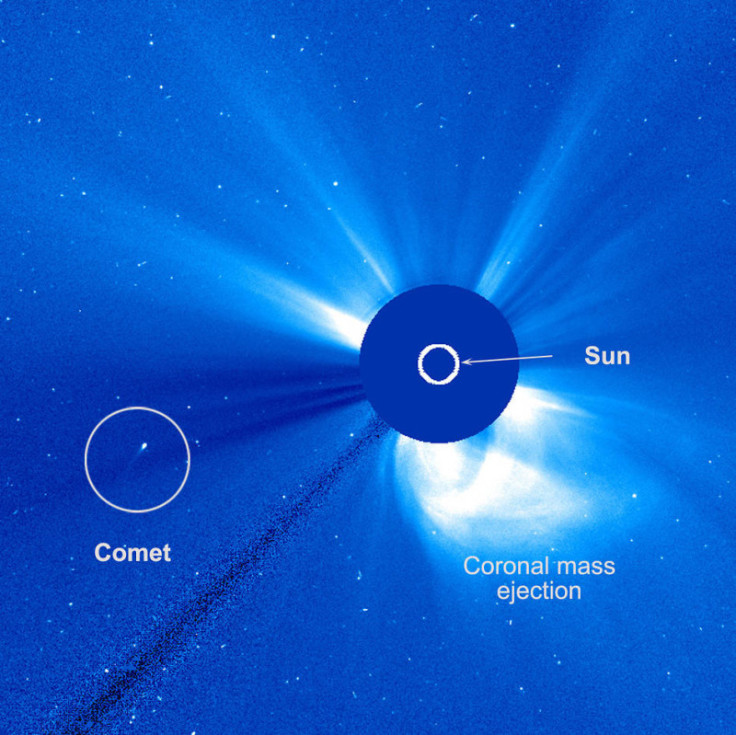Unusual comet survives close encounter with sun but its future remains uncertain

The SOHO sun observatory has caught images of an unusual comet which skimmed dangerously close to the sun a few days ago and survived.
The comet C/2015 D1 (SOHO) may be seen by sky watchers in the next few days unless it meets its end in the trip around the sun.
The event on February 18-21, 2015 was captured by the European Space Agency (ESA) and Nasa's Solar and Heliospheric Observatory, or SOHO.
Unlike a large fraction of comets, this one does not belong to any family of comets. Most comets seen by SOHO belong to the Kreutz family – believed to have broken off from a single giant comet many centuries ago.
Most of the sungrazers follow the same orbit prompting a theory that they were all fragments of a single comet 20 to 100km wide which broke up.
The original comet, and its fragments, probably break up repeatedly as they orbit the sun in a period of about 800 years.
These comets are believed to be no more than tens of metres in diameter (in comparison to the sun's 1,390,000,000 metres).
The latest sungrazer comet is also special because it is among the few survivors who go very close to the sun and live to tell the tale. It made it to within 3.5m km of the sun's surface.
Most comets, which are made up of ice and dirt, usually evaporate in the intense sunlight.
The comet is also unusually bright at a magnitude of +4-4.5 but will fade eventually.
It is presently 127m km from Earth and 45m km from the Sun. That puts it about 13m km closer to the Sun than the planet Mercury.
"There's a half-decent chance that ground observers might be able to detect it in the coming weeks," said Karl Battams, a solar scientist at the Naval Research Lab in Washington, DC. "But it's also possible that events during its trip around the sun will cause it to die fairly fast."
Since launching in 1995, SOHO has become the number one comet finder of all time – a majority of these comets have been found by amateur astronomers and enthusiasts from all over the world.
The latest comet was SOHO's discovery number 2,875.
SOHO sees non-group comets like this only a few times a year.
However, until now, none of the telescopes trained on the sun was sensitive enough to follow any of these comets to their death in the sun.
Two years ago in 2012, scientists using Nasa's Solar Dynamics Observatory (SDO), SOHO and Solar-Terrestrial Relations Observatory (STEREO), followed another Kreutz comet C/2011 N3 as it disintegrated at 100,000km from the Sun.
It was only recently with the landing of a probe Philae on a comet that scientists have been able to study a comet at close quarters.
Comet 67P/Churyumov-Gerasimenko has revealed a surface 70 to 80% porous, and proved to be more of a "snowy dustball" than a "dirty snowball."
A diverse composition with regions covered by fine dust where one could sink, and places which are firm have been observed by ESA's Rosetta spacecraft orbiting the comet on its way to the sun.
Another Comet Lovejoy, recently bid goodbye to Earth for the last time in 8,000 years, as it flew towards the sun.
Comets are ancient relics residing outside the solar system and believed by some scientists to have seeded life and water on earth.
But chemical analysis of water on Comet 67P/Churyumov-Gerasimenko shows thrice the deuterium content compared to water on Earth, disproving comets are water bearers.
© Copyright IBTimes 2025. All rights reserved.





















